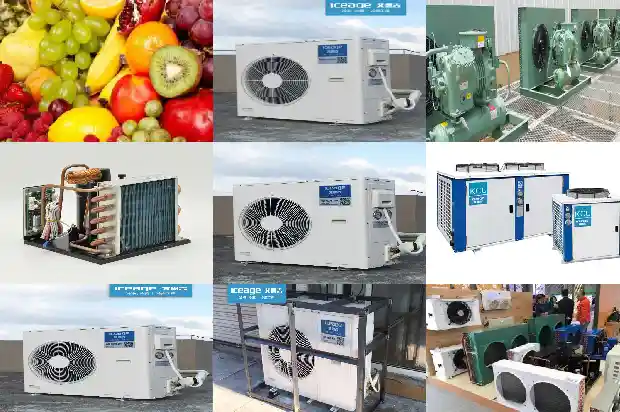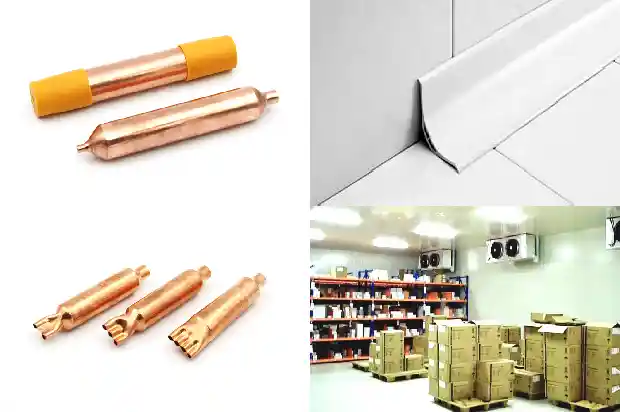Maintenance Methods for Exhaust Volume and Winding Performance of Typical Air - conditioner Compressors
2025-03-16
I. Fault Detection for Decrease in Compressor Displacement
Detecting the suction and exhaust capabilities of the compressor is an important basis for determining whether the exhaust performance of the compressor is good. Take the Hitachi S0145CY - P6AG compressor as an example to introduce the inspection methods for the suction and exhaust capabilities of the compressor. This compressor belongs to the reciprocating piston - type compressor, with a working frequency of 50Hz and a working voltage of 220 - 240V.
- Remove the compressor and power it on to make it operate. Use your finger to block the exhaust hole of the compressor for a moment, and then move your hand away. Since there is pressure inside the compressor, when you block the exhaust hole of the compressor with your finger, you should feel the exhaust pressure.
- When you move your finger away, you can hear a "hissing" exhaust sound, which indicates that the compressor is in good performance. If you don't feel any pressure when blocking the exhaust pipe with your finger, and you can't hear the exhaust sound when you release your hand, it means the compressor has poor performance.

- Next, check the suction pipe of the compressor. Press your finger on the suction pipe. If you feel the suction pressure, it means the compressor is normal.
- When you move your finger away, if you don't feel any suction, it means the compressor has no suction capacity.
II. Detection of the Winding of a Fixed - Frequency Compressor in an Air - conditioner
The motor of the air - conditioner compressor is usually installed inside the sealed housing of the compressor. There are terminal posts for the motor winding on the top of the compressor, and leads are drawn out from the terminal posts. The yellow lead is connected to the starting end of the motor winding, the black lead is connected to the common end of the motor winding, and the red lead is connected to the running end of the motor winding.
- Before detecting the winding of the air - conditioner, first remove the leads on the compressor winding terminals. Use a flat - nose pliers to remove the lead at the starting end, and the color of this lead is yellow.
- Remove the lead at the running end, and the color of this lead is red.
- Remove the lead at the common end. The lead at the common end is connected to a butterfly - shaped protection relay, and the color of this lead is black.
- At this point, the leads on the compressor winding have been completely removed.
- After the leads are removed, remove the protective gasket on the compressor from the compressor.
- After the gasket is removed, the winding of the compressor is revealed. The common end, starting end, and running end of the winding can be determined according to the markings on the compressor winding.
- Generally, when detecting the winding of a fixed - frequency compressor motor, only the resistance values between the leads need to be detected. Detect the resistance value between the starting end and the common end of the compressor. The resistance value can be read as 5Ω from the reading shown on the multimeter.
- Detect the resistance value between the running end and the common end of the compressor. The resistance value can be read as 4Ω from the reading shown on the multimeter.
- Use the multimeter to detect the resistance value between the starting end and the running end. The resistance value can be read as 9Ω from the reading shown on the multimeter. Through the three - group resistance values, it can be found that the resistance value between the starting end and the running end is equal to the sum of the resistance value between the starting end and the common end and the resistance value between the running end and the common end.
- If a very small resistance value is detected, it means the winding is grounded. Remove the protective cover of the motor terminal post, and use the resistance range of the multimeter to detect the common end. Make one test lead contact the common end, and the other test lead contact the ground. If the measured resistance value is very small (tending to 0), it means it is grounded, and the compressor housing needs to be opened for insulation treatment.

III. Detection of the Winding of a Variable - Frequency Compressor in an Air - conditioner
The connection terminals of a variable - frequency compressor are usually marked with C, R, and S, representing the winding terminals of the variable - frequency compressor. According to the characteristics of the DC brushless motor used in the variable - frequency compressor, the resistance values between the windings of the three - phase windings of the DC brushless motor are all the same. Therefore, there is no distinction between the common end, starting end, and running end. In the circuit, the windings of the variable - frequency compressor are often represented by u, V, and W. At this time, they can be distinguished according to the connection between the variable - frequency circuit and the variable - frequency compressor.
For a variable - frequency compressor, the method of detecting the resistance values between its windings can also be used to determine whether the variable - frequency compressor is normal. During detection, adjust the multimeter to the "R×1k" ohm range, and place the red and black test leads between "C - R", "C - S", and "R - S" respectively to detect the winding resistance values of the variable - frequency compressor.
Under normal circumstances, the resistance values of the three - group windings are the same. If the measured resistance values are not the same, it means the variable - frequency compressor is damaged and needs to be replaced.
For a variable - frequency compressor, the method of detecting the resistance values between its windings can also be used to determine whether the variable - frequency compressor is normal. During detection, adjust the multimeter to the "R×1k" ohm range, and place the red and black test leads between "C - R", "C - S", and "R - S" respectively to detect the winding resistance values of the variable - frequency compressor.
Under normal circumstances, the resistance values of the three - group windings are the same. If the measured resistance values are not the same, it means the variable - frequency compressor is damaged and needs to be replaced.

Related Articles
- Basic Knowledge of Cold Storage Maintenance
- Comprehensive Guide to the Operation and Maintenance of Cold Storage
- Common Faults and Daily Maintenance of Commercial Ice Makers
- The Use and Common Maintenance Methods of Refrigeration Compressors
- Working Principle and Daily Maintenance of Water-based Machines
- Operation and Maintenance Process of Cooling Towers
- Refrigeration Components of Refrigeration
- Basic Faults and Preventive Maintenance of Water - cooled Units
- Essential for Maintenance! Parameters and Phenomena of Normal Operation of Refrigeration and Heating Systems
- Welding Equipment Used in Refrigeration System Maintenance
- Maintenance Methods for Small Modular Cold Storage Failures
- Maintenance Techniques for Air - conditioning Refrigeration Systems
- Maintenance Strategies for the Working Cycle and Electrical Automatic Control of Chillers
- Essential Basics for Maintenance, Debugging of Refrigeration and Air - conditioning Systems
- 8 Maintenance Procedures for Industrial Chillers
- Requirements and Maintenance for Building Meat Food Cold Storage
- Maintenance Methods for Faults in Screw Refrigeration Air - conditioner Compressors
- Maintenance Methods for Refrigerant Leak in Air - conditioner Outdoor Unit
